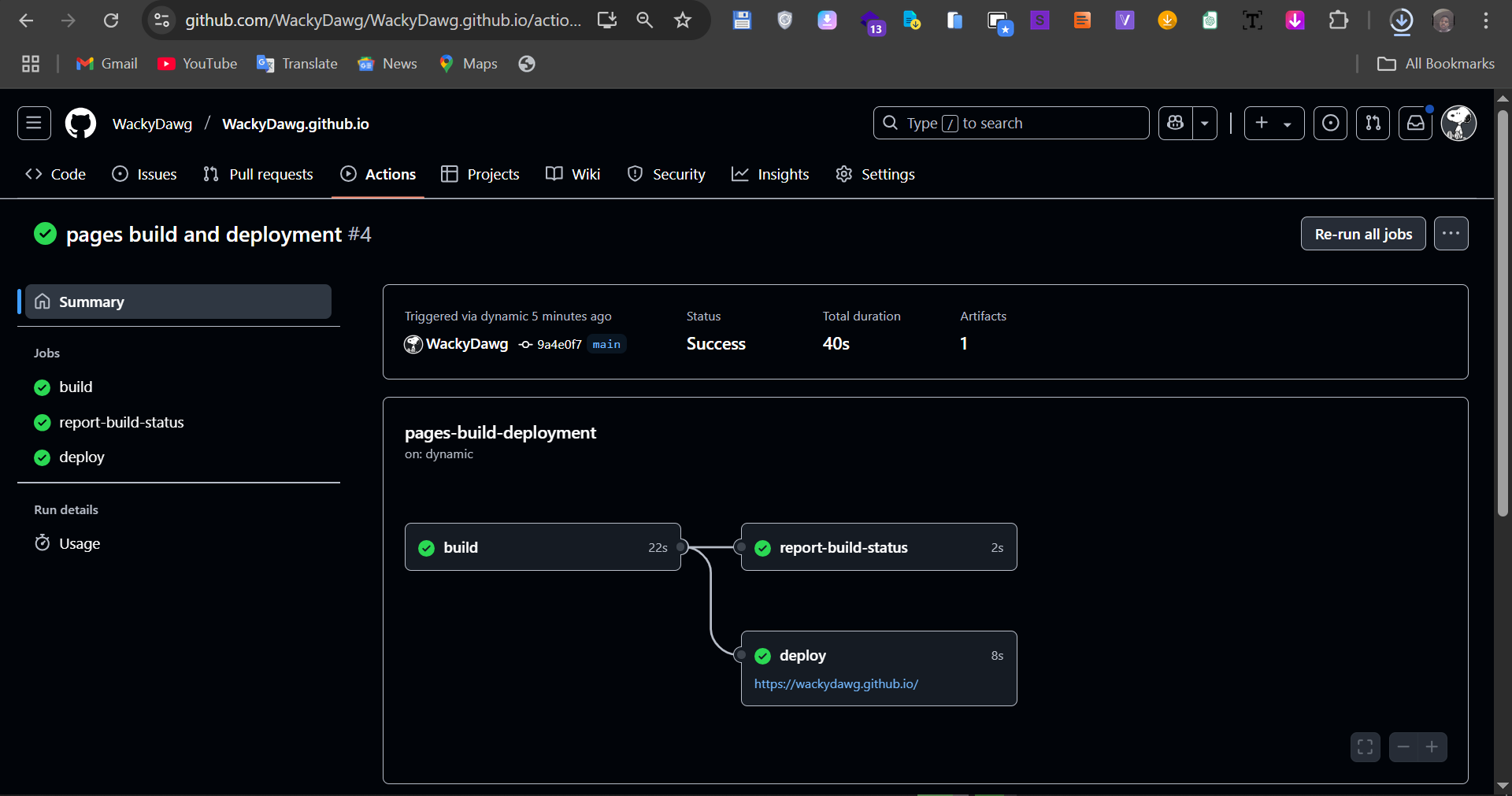Supercharge Your Workflow: CI/CD Pipelines with GitHub Actions
Supercharge Your Workflow: CI/CD Pipelines with GitHub Actions
Step-by-Step Guide to Automating Testing, Building, and Deploying
In today’s rapidly changing development world, automation is no longer a nicety — it’s a necessity. Relying on human testing, creating, and deployment can lead to delays, mistakes, and developer burnout. That’s where CI/CD pipelines enter the scene: the lifeblood of modern DevOps practices, delivering software quickly and correctly.
GitHub Actions—a native GitHub feature—allows you to create custom CI/CD pipelines within your own repositories. Whether you’re deploying a web application, a mobile app, or an API, GitHub Actions streamlines the process with little setup time.
Through this tutorial, you will learn how to:
- Create a CI/CD pipeline from the ground up using GitHub Actions.
- Automate testing, compiling, and deploys.
- Fine-tune workflows for maximum speed and security.
By the end, you’ll have a ready-to-go pipeline that eliminates hours of tedious manual labor. Let’s get started!
1. What Is CI/CD?
Continuous Integration (CI)
CI automatically validates code changes by running tests and builds whenever new commits are made. This early detection helps catch bugs before they reach production.
Continuous Deployment/Delivery (CD)
CD handles automated deployment of code to production (deployment) or getting it ready for release (delivery), putting your software into a stable, deployable state.
Why GitHub Actions?
- Built In Right Out of the Box: No third-party services required.
- Roomy Free Tier: 2,000 free minutes/month for public repos.
- Huge Marketplace: 10,000+ reusable actions to choose from.
2. Setting Up Your First GitHub Actions Workflow
Step 1: Create Your Workflow File
Inside your repository, make a .github/workflows directory. Place a YAML file (e.g., ci-cd.yml) containing the following:
name: CI/CD Pipeline
on:
push:
branches: [main]
pull_request:
branches: [main]
jobs:
build-and-test:
runs-on: ubuntu-latest
steps:
- name: Checkout repository
uses: actions/checkout@v4
- name: Setup Node.js
uses: actions/setup-node@v4
with:
node-version: 20
- name: Install packages
run: npm install
- name: Run tests
run: npm test
Important Elements:
on: Identifies event triggers (e.g., push tomain).jobs: Collections of tasks (e.g., build and test).steps: Sequential steps (e.g., installing dependencies).
Step 2: Watch It Run
Push the YAML file, and GitHub Actions will be triggered automatically:
- Go to your Actions page in your repo.
- Find your CI/CD Pipeline workflow.
- Observe logs as it runs live.

3. Automating Testing
Unit Testing
Set up a test script within your package.json file:
{
"scripts": {
"test": "jest"
}
}
GitHub Actions will execute npm test automatically.
Code Coverage Metrics
Generate coverage reports using the jest-coverage-report-action:
- name: Create coverage report
uses: ArtiomTr/jest-coverage-report-action@v2
with:
github-token: $
Linting and Code Style Checks
- name: Lint codebase
run: npm run lint
- name: Check code formatting
run: npm run format:check
4. Automating Builds
Build Your App
- name: Build application
run: npm run build
Speed Up with Dependency Caching
- name: Cache dependencies
uses: actions/cache@v3
with:
path: ~/.npm
key: $-node-$
Matrix Strategy
Test your project against multiple versions of Node.js:
strategy:
matrix:
node-version: [18, 20]
5. Automating Deployments
Deploy to GitHub Pages
- name: Publish to GitHub Pages
uses: peaceiris/actions-gh-pages@v3
with:
github_token: $
publish_dir: ./build
Deploy to AWS S3
- name: Set AWS credentials
uses: aws-actions/configure-aws-credentials@v4
with:
aws-access-key-id: $
aws-secret-access-key: $
aws-region: us-east-1
- name: Upload to S3
run: aws s3 sync ./build s3://your-bucket-name
Deploy to Heroku
- name: Push to Heroku
uses: akhileshns/heroku-deploy@v3
with:
heroku_api_key: $
heroku_app_name: your-app-name
heroku_email: your-email@example.com
6. Advanced CI/CD Techniques
Run Jobs in Parallel
jobs:
test:
runs-on: ubuntu-latest
steps: [ . ]
build:
runs-on: ubuntu-latest
needs: test
steps: [ . ]
deploy:
runs-on: ubuntu-latest
needs: build
steps: [ . ]
Require Manual Approvals
deploy-prod:
runs-on: ubuntu-latest
needs: deploy-staging
environment:
name: production
url: https://your-production-url.com
steps:
- name: Deploy to Production
run: ./deploy-prod.sh
Manage Secrets Securely
- Go to Settings > Secrets > Actions.
- Enter your keys or tokens securely.
- Use secrets within workflows as
$.
7. Troubleshooting and Optimization
Common Pitfalls
- Access Errors: Proper permissions should be set.
- Version Conflicts: Stick to lockfiles to avoid conflicts.
- Timeouts: Break down complex workflows into faster tasks.
Optimization Tips
- Leverage Caching: Save installation time.
- Use Self-Hosted Runners: Faster builds on your hardware.
- Skip CI When Needed: Include
[skip ci]in commit messages to skip runs.
8. Full-Featured Example: Full CI/CD Pipeline
Entire React App Workflow
name: React CI/CD
on:
push:
branches: [main]
pull_request:
branches: [main]
env:
CI: true
jobs:
test:
runs-on: ubuntu-latest
steps:
- uses: actions/checkout@v4
- uses: actions/setup-node@v4
with:
node-version: 20
- run: npm ci
- run: npm test
build:
runs-on: ubuntu-latest
needs: test
steps:
- uses: actions/checkout@v4
- uses: actions/setup-node@v4
with:
node-version: 20
- run: npm ci
- run: npm run build
- uses: actions/upload-artifact@v3
with:
name: build
path: build
deploy:
runs-on: ubuntu-latest
needs: build
environment: production
steps:
- uses: actions/download-artifact@v3
with:
name: build
- uses: aws-actions/configure-aws-credentials@v4
with:
aws-access-key-id: $
aws-secret-access-key: $
aws-region: us-east-1
- run: aws s3 sync ./build s3://your-bucket-name
9. Security Tips
- Apply Least Privilege: Only grant necessary access.
- Enable Dependabot: Stay alert to vulnerabilities.
- Add Code Scanning: Use CodeQL or other tools.
10. Tracking and Metrics
Keep an eye on performance using:
- GitHub Actions Insights: Analyze durations and failure rates.
- Third-Party Tools: Integrate Datadog, Prometheus, etc.
- Notifications: Alert failures via Slack, Email, etc.
Conclusion
Automating your entire software lifecycle—from testing to deployment—is just a few YAML lines away with GitHub Actions. You’ll deploy faster, catch bugs earlier, and spend more time building awesome products.
What’s Next?
- Discover the GitHub Actions Marketplace.
- Migrate from legacy CI/CD systems like Jenkins.
- Share reusable workflows with the community!
Additional Resources
```
Leave a comment